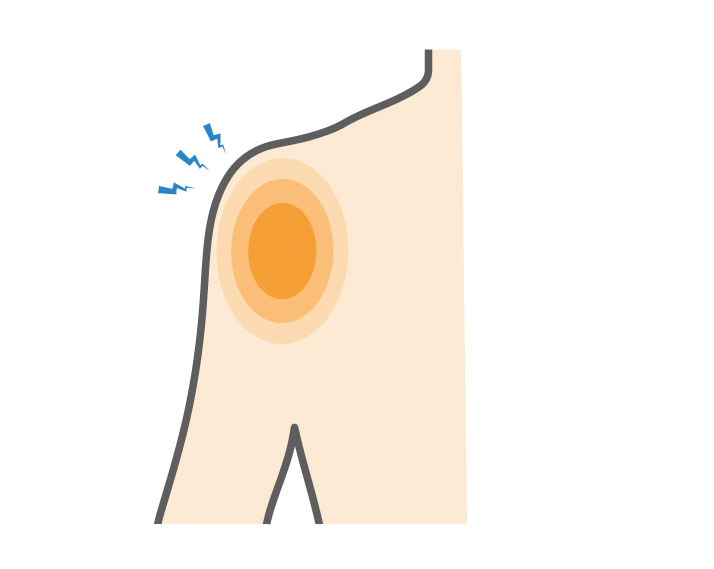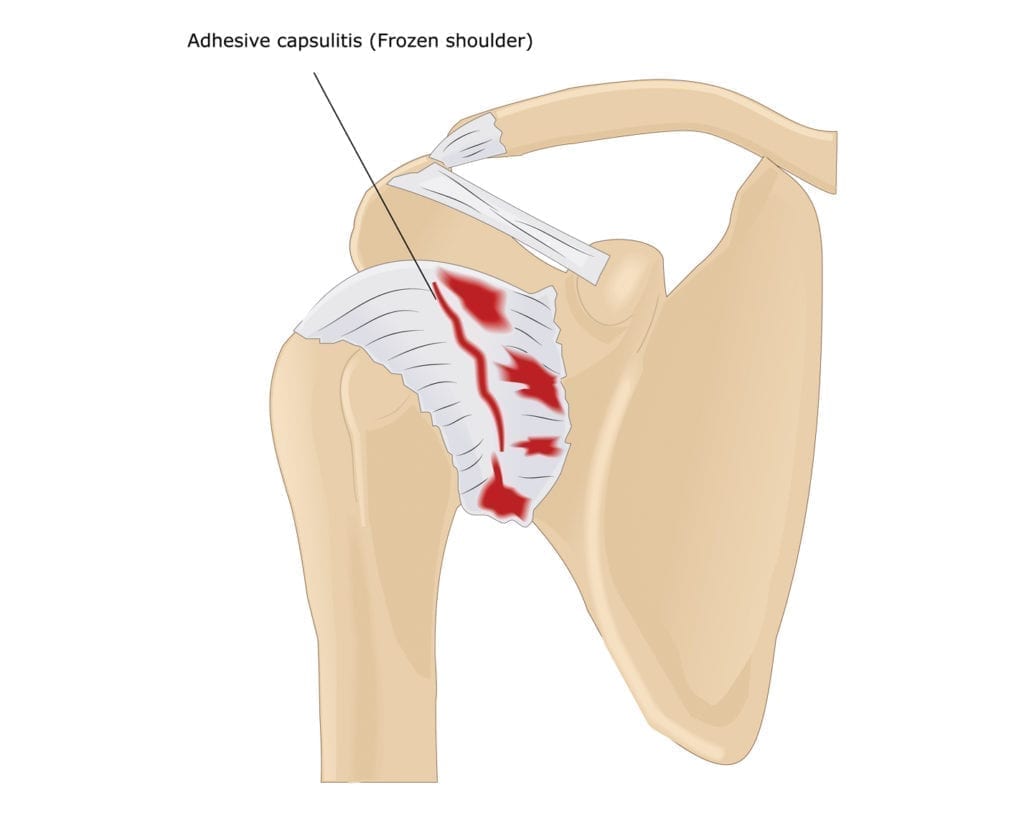A frozen shoulder, also called adhesive capsulitis is a condition where the shoulder becomes painful and stiff. It usually progresses through 3 stages:
1. Freezing
This is the initial and most painful stage. It usually results in a slow loss of motion and shoulder stiffness and lasts 2–6 months.
2. Frozen
In this second stage, the pain lessens, but the limited shoulder mobility persists. This stage can last from 3–6 months.
3. Thawing
In this last phase motion slowly improves. This stage can last from 3- 12 months.



